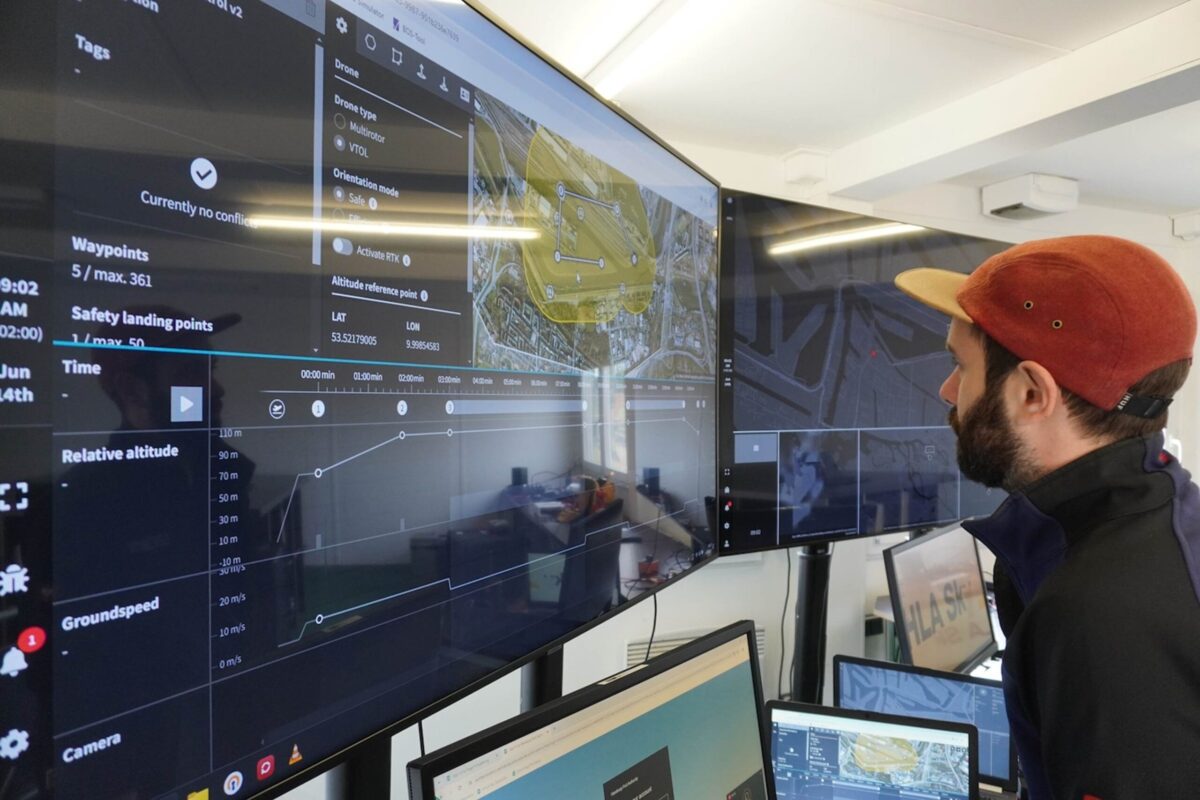
FAA’s Mike O’Shea at the Energy Drones and Robotics Summit
The Energy Drone and Robotics Summit in Houston today hosted attendees, exhibitors and speakers from around the world and most industrial sectors. At the DRONERESPONDERS co-located event, FAA experts were on hand to discuss the current environment in public safety, and what’s coming for first responder drone programs.
Sgt. Robert Dooley of the Florida Highway Patrol moderated the town hall discussion with FAA public safety liaison Michael O’Shea and Airspace Security Manager for Systems Operation Support Center Kerry Fleming.
Robert Dooley has spent 22 years as a Florida trooper, and was an early adopter of drone technology in his department. “When I started in the force, everything was hand written and manual. It’s amazing how far technology has come,” he comments. “But if we’re going to use these tools, we have to do it the right way.”
Airspace Permissions
Kerry Fleming – a 38 year veteran of the FAA – runs the department that handles first responder requests for airspace access. His team of 8 people is available 24/7, 365 days a year. “We’re there to assist – our motto is ‘we’re always there to get you in the air,’” he says. “When you have a COA, or you need an amendment, you need to get into restricted airspace – we’re the ones who help you get where you need to be.”
Special Government Interest (SGI) requests are designed for the kinds of emergencies that public safety departments face: missing persons, natural disasters, attacks – situations where lives are in danger and drone operations can improve outcomes. While originally it took time to process these requests, Fleming says that is no longer the case. “We turn around SGI request in minutes, especially in the middle of the night,” he comments. His team has been working on streamlining the process for years – while the FAA still has heavy paperwork requirements, they are working with service providers and app developers to take the burden of that paperwork from public safety. As the process has gotten better and drone programs have proliferated, so have the number of requests that they process. “We’re seeing a 35% increase year over year,” Fleming says.
Operating Beyond Visual Line of Sight (BVLOS)
“Drone as First Responder” or DFR programs are evolving to operate beyond visual line of sight of the operator, currently the law for Part 107 operators. While the FAA has not yet issued a rule for regularizing BVLOS flight, first responder programs still have options. “We have several different ways that [first responders] can operate BVLOS,” O’Shea explains.
The Chula Vista police department was one of the first to operate a DFR program. Chula Vista has a visual observer on the rooftop when the drone is launched, and they are able to fly in a 3 mile radius of that roof to get visual awareness of a situation. Their program required geofencing populated areas, such as playgrounds, and assurance that their flight areas offer strong communications services.
“Now we’re looking at different solutions, because in the summer the guy on the roof has a terrible job – it gets hot,” says O’Shea. In Pearland TX, he explains, the department has an IRIS camera system on the roof of a nearby water tower along with ADS-B monitors and other technologies to ensure airspace awareness. “That’s worked very well,” comments O’Shea, noting that the camera is less effective for nighttime operations.
O’Shea explains that all of the related tools like parachutes, cameras and radar that help departments get permission to fly BVLOS are known as “associated elements of safety.” There are many tools available: and the market is expanding rapidly. “The FAA is not in the business of evaluating technologies,” said O’Shea. “What we do is let people come to us with the data from testing their device, so we can see if it meets the safety case.”
The FAA is also allowing BVLOS flight under the concept of obstruction shielding. “Obstruction shielding” refers to operating a drone within 50 feet of a structure. This meets safety needs: the closer a drone is to an obstruction, the less likely it is to encounter manned aircraft. “That’s a Part 107 application,” O’Shea explains. “You still have to mitigate the risk for ops over people and moving vehicles.”
What is a Drone as First Responder?
Sgt. Dooley points out that for departments just starting a drone program, it may be better not to immediately apply for BVLOS permissions. “You’ve got to crawl, walk, and run – you don’t want to go right into advanced operations,” he says, pointing out that it’s the department’s responsibility to figure out every possible way that something negative might happen, basing their policies on those risks.
While DFR technology is evolving, Dooley points out that officers showing up on scene with a drone are also acting as Drone as First Responder – and they have a lot of value to add for the community. “The technology isn’t always there to ensure that there is no down time as the drone goes back to a box to charge, or that the guy isn’t on the roof,” he comments. “Don’t get hung up on needing that drone in the box or that BVLOS capability – you are still reducing costs and adding value.”
Read more:
Miriam McNabb is the Editor-in-Chief of DRONELIFE and CEO of JobForDrones, a professional drone services marketplace, and a fascinated observer of the emerging drone industry and the regulatory environment for drones. Miriam has penned over 3,000 articles focused on the commercial drone space and is an international speaker and recognized figure in the industry. Miriam has a degree from the University of Chicago and over 20 years of experience in high tech sales and marketing for new technologies.
For drone industry consulting or writing, Email Miriam.
TWITTER:@spaldingbarker
Subscribe to DroneLife here.






